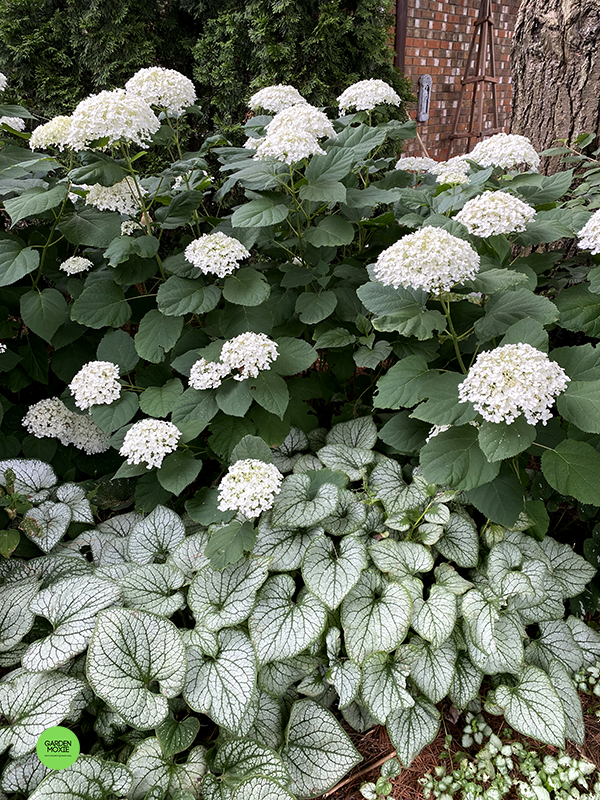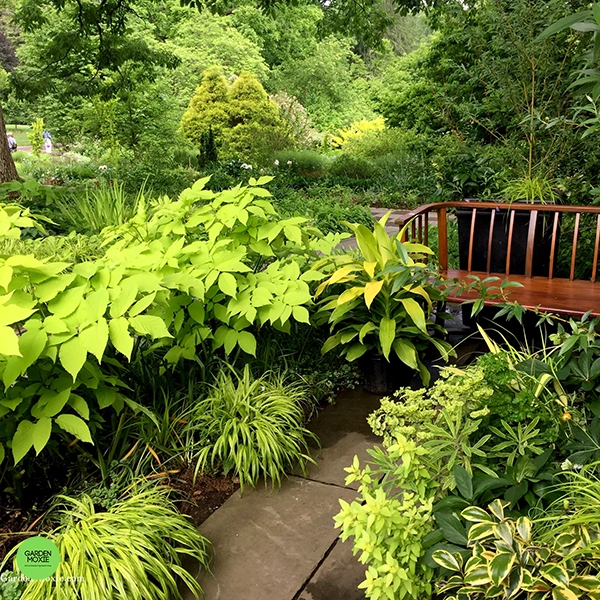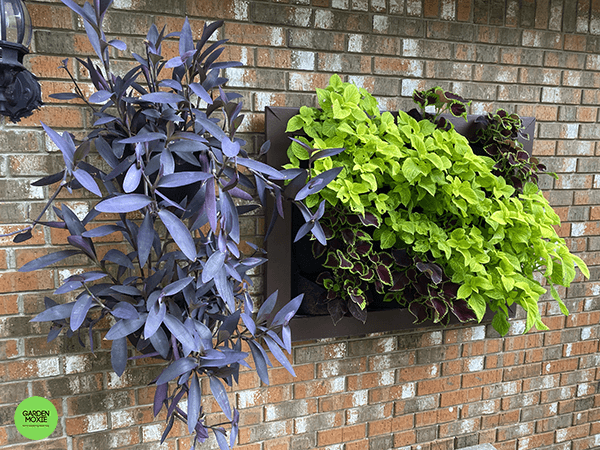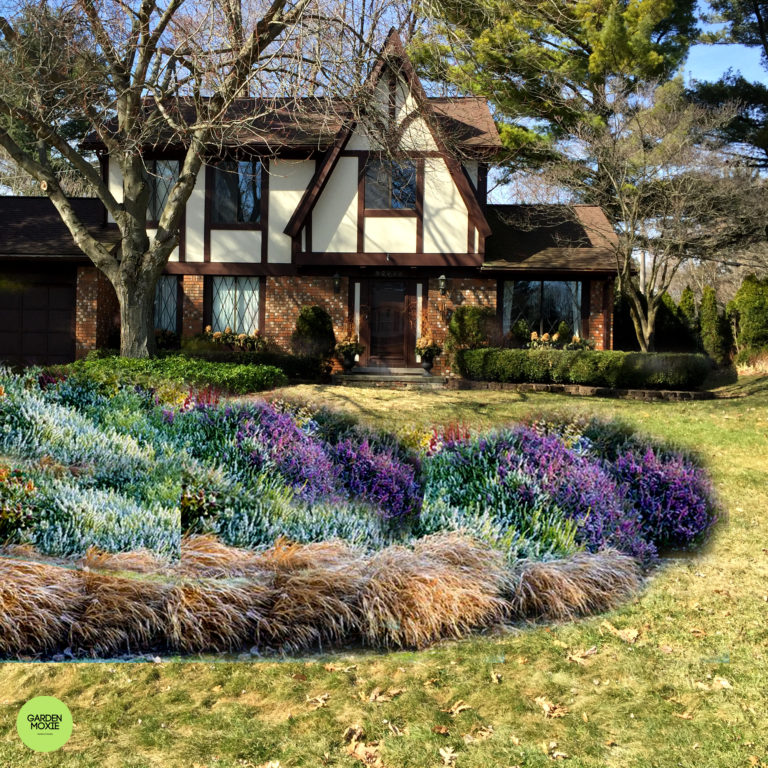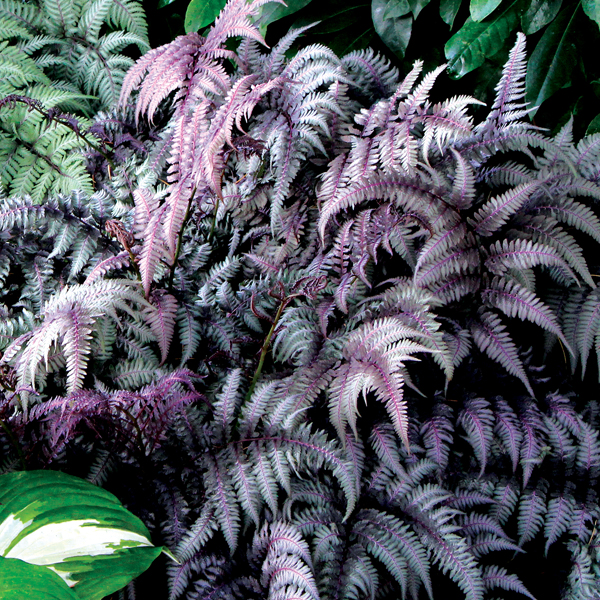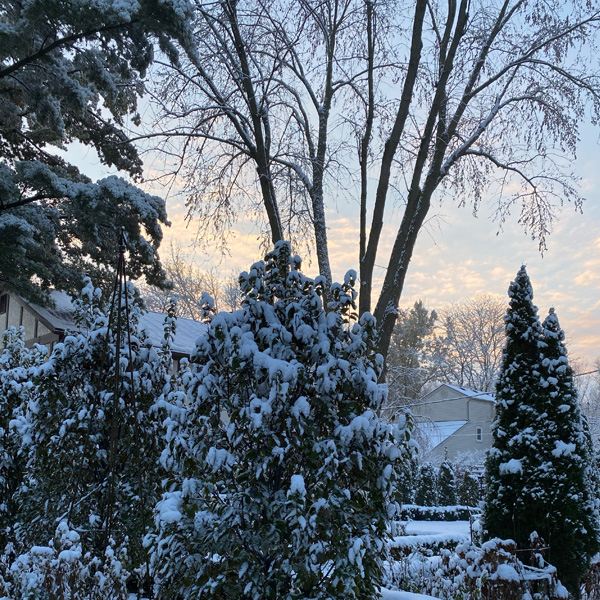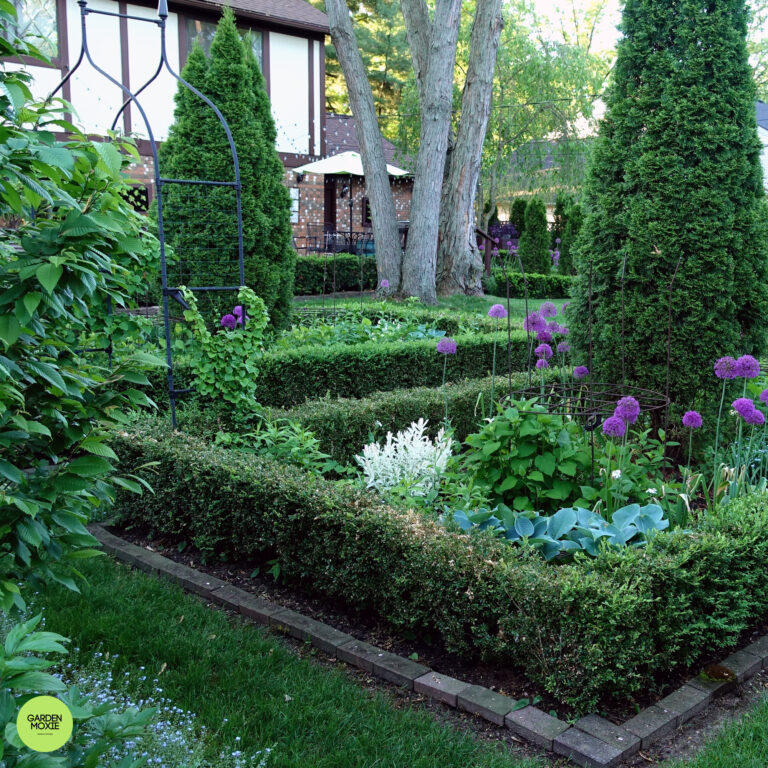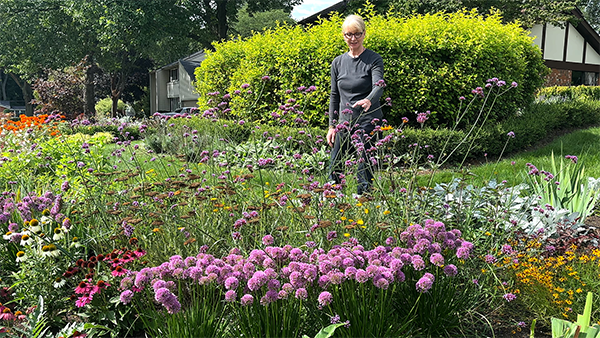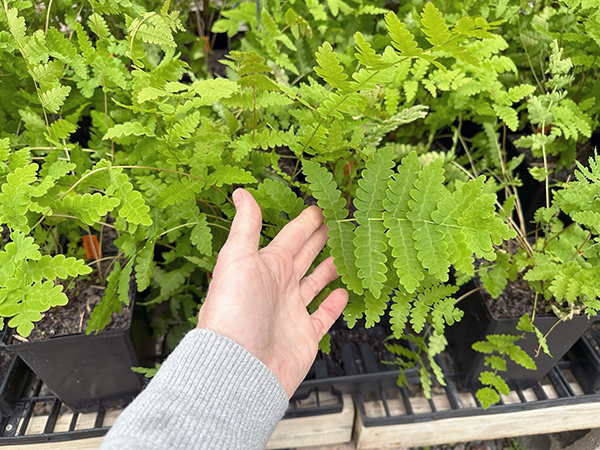The Joy of Gardening in Shade
Let’s get one thing straight. Shade gardening is tough.
I used to feel sorry for myself having a shady garden. I thought all the great garden plants needed full sun. Then I discovered that colorful foliage and textures can create a shade garden that’s just as pretty as a sunny garden. Let me explain.
There are a lot of benefits to growing plants in shade. Shade gardens can help to cool down an area, which is helpful in areas that get too hot during the summer. Shade gardens can also help to reduce the amount of water that is needed because they can help to keep the ground cooler. And trees and shrubs can help to break up the wind and create a more sheltered space in a shady location.
When you look at shade gardening through this lens, you see the benefits a shady location provides. A shade garden can be a beautiful and inviting space, especially during the hot summer months. If you are lucky enough to have a shady spot in your yard, or if you are looking for ideas to create a shady garden, you are in the right place.
The most important thing you need to figure out is how much shade your garden gets. This can be done by taking a look at the area during different times of the day to make sure you understand how the light changes in your garden.
A successful (and lower maintenance) garden always selects the right plant for the right place. This is the key to successful home gardening. Once you know the amount of light your garden gets, you can select the right plants that will thrive.
3 Types of Shade
Partial Shade
This is when a plant is shaded for part of the day, but receives some direct sunlight. Partial shade can be found in areas that are shaded by trees or buildings, or in areas that are in the sun for part of the day.
Dappled Shade
This is light shade that is created by sunlight shining through trees or other objects. Dappled shade is often found in forests and woodlands.
Full Shade
This is when a plant is shaded for the majority of the day and does not receive any direct sunlight. Full shade can be found in areas that are shaded by trees or buildings, or in areas that are in the shade for the entire day.
Shade Garden Plants
There are a lot of plants that thrive in shady areas, so you have plenty of options when designing your garden. Some of my favorites are brightly colored foliage plants.
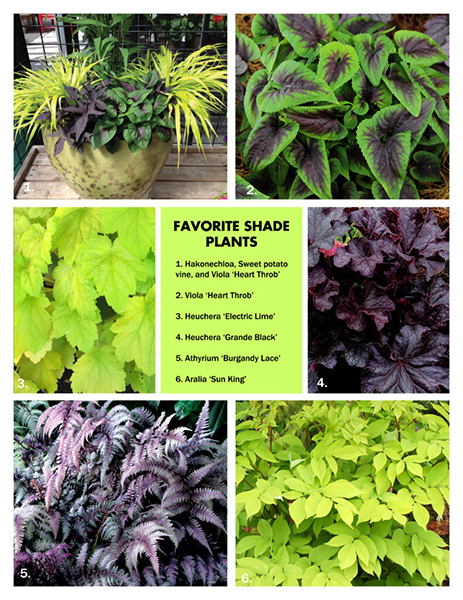
Shade Garden Design
A shady garden can be a beautiful and inviting space, especially during the hot summer months.
There are lots of ways to design a shade garden. You can create a garden with a mix of shade-loving plants and ground covers. Mix up different textures and colors to create a unique tapestry of plants. Try using coleus, wild ginger, and hellebores.
Another option is to create a garden with all shade-loving plants. Some of my favorite shade-loving plants are Annabelle hydrangeas, Aralia ‘Sun King’, and the standard form tri-colored willow.
If you’re looking for design ideas, take a look at the beautiful shady corner at Chanticleer below.
Shade Garden Ideas
There’s a few things to consider when you are designing a shade garden.
Planning Your Shade Garden
Shade gardens can be created in any garden style including traditional gardens, container gardens, and rock gardens. Use your imagination and create a space that reflects your personal taste.
When planning a shade garden, it’s important to choose plants that will thrive in the shaded conditions. Shade-loving plants come in a variety of shapes and sizes, and there is sure to be a plant that will thrive in your garden.
The most important thing you can do as a home gardener is select the right plant for the right place.
One of the best tools a gardener has at their disposal is the Native Plant Trust plant finder. You choose the growing criteria and the plant finder will provide a list of suitable plants for your garden.
Besides choosing the right plants, it’s important to choose the right location for your shade garden. The north side of a building or a large tree can provide the perfect amount of shade for a shade garden.
If you don’t have a naturally shady spot in your garden, you can create a shade garden with a few simple additions, such as a garden canopy, a pergola, or a trellis.
With a little bit of planning, you can create a beautiful shade garden that will thrive in the cool, moist environment under trees or in other shady spots.
Keep These Things in Mind as Your Plan Your Shade Garden
Shade-loving plants. There are many plants that thrive in shady conditions, so take your time choosing plants that will grow well in your garden. Don’t forget to try an online plant finder if you are having trouble finding suitable plants.
Shade-tolerant plants. There are also a lot of plants that can tolerate some shade, so you can include a few of these in your garden as well.
Moisture. Most shade plants prefer moist soil, so make sure to provide adequate water during the growing season. Keep in mind that plants growing under a large tree will compete with the tree for water and nutrients. Watch your plants carefully to ensure they are thriving.
Soil type. Most shade plants prefer a rich, moist soil, so if your soil is not very fertile, you may need to add some organic matter to it before planting. Your best bet is to take a soil test so you know if any nutrients are missing from your soil.
Size of garden. If you have a small garden, you will need to choose plants that will fit well in the space available. Always read the plant labels to know a plant’s mature size and plan accordingly.
Sun exposure. If your garden receives some direct sun exposure, you will need to choose plants that can tolerate a little bit of sun. Be sure to check the plant tags. There are a lot of part shade plants that can tolerate sunlight, especially morning sun.
How to Plant a Shade Garden
Shade gardens can be a beautiful addition to any yard, and they’re easy to create by following a few simple steps.
1. Choose your plants. When selecting plants for a shade garden, be sure to consider the amount of sunlight the plants will receive. Shade-loving plants include hosta, ferns, and hydrangeas, among others.
2. Prepare the soil. Be sure to use a soil mix specifically designed for shade gardens, as this will help the plants thrive. It’s best to do a soil test before you get started.
3. Plant the plants. Once you’ve selected your plants and prepared the soil, it’s time to plant them. Dig a hole for each plant, and be sure to follow the planting instructions that come with the plants. It’s as easy as following the instructions on the plant tags.
4. Mulch. Once the plants are in place, be sure to mulch them to help keep the soil moist and to protect them from weeds.
5. Water and fertilize. Keep the plants well watered and fertilized, especially in the early weeks after planting, to help them get off to a good start.
Shade Gardening Tips
Plant Shade-Loving Flowers: Shade-loving flowers thrive in areas that are partially shaded or have dappled sunlight. Some good choices include impatiens, begonias, astilbe, and corydalis lutea.
Use Shade-Tolerant Plants: Shade-tolerant plants are able to grow in areas that are mostly shaded. Some good choices include Japanese maple, rhododendron, and ferns.
Group Plants Together: When planting in a shaded area, group plants together to create a natural shade garden. This will help to maximize the amount of shade that the plants receive. Look at photos of woodland gardens for inspiration on how to group plants.
Use Groundcover: Groundcovers are a great way to cover up bare areas in a shaded garden. You need to be careful not to plant invasive groundcovers. Always read the plant labels and do your research. My favorite shade-loving groundcover is lamium.
Use Tree Trunks and Lattice: If you have a large shaded area, use tree trunks and lattice to create a natural boundary. This will help to define the space and create shady areas for plants to grow.
Partial Shade Garden
A partial shade garden is a garden that includes plants that can tolerate some amount of sunlight and some amount of shade. This type of garden can be created in a variety of ways, depending on the location of the garden and the plants that are chosen.
One way to create a partial shade garden is to plant tall plants in the back of the garden and shorter plants in the front. This will create a natural shade for the plants in the front of the garden.
Another way to create a partial shade garden is to use trees and shrubs to create a natural shade for the garden. Shade trees and shrubs can be used to create a shaded area next to a building or fence, or they can be used to create a shady border around the garden.
There’s a huge variety of plants that can be used in a partial shade garden, including hostas, ferns, daylilies, and Japanese anemones. These plants will tolerate some amount of sunlight and some amount of shade.
A shady garden doesn’t have to be dark and dreary. In fact, there are many beautiful plants that thrive in partial shade. Hostas, ferns, and begonias are just a few examples. These plants will tolerate some amount of sunlight and some amount of shade.
They will thrive in the dappled sunlight that filters through the trees or in an area that is shaded for part of the day. Partial shade plants typically have light green leaves and grow slowly, so they are perfect for a low-maintenance garden.
If you are looking for a splash of color in your shade garden, try adding some flowers. There are many beautiful flowers that grow in partial shade, including impatiens, begonias, and Oriental lilies. These plants will add a pop of color to your garden and have a long bloom season.
If you are looking for a more natural look in your shade garden, try adding some ferns or pulmonaria to your garden. These plants grow in the shade and will add some great textures to your garden.
If you are looking for something that blooms in the shade, try adding corydalis ‘lutea’ (check out the photo below). This happy plant will bloom all summer long and adds a bright yellow color to your garden.

Another option is to plant hostas. They grow well in the shade and there’s a huge variety of colors and textures available. You can also add ferns, wild ginger, and hellebores to your garden to add more texture.
Check out this these beautiful shade garden ideas from Proven Winners.
Shade Garden Kits
If you are interested in creating a shade garden, a shade garden kit can be a great way to get started. The kit includes all of the plants you need to get started and provides you with information on how to care for your shade garden.
Here are 3 Shade garden kits to check out.
Blue Stone Perennials Shade Garden Kit
White Flower Farm Starter Shade Collection
Breck’s Designer Shade Garden Kit
When choosing a shade garden kit, be sure to consider the size of your garden. Some kits are designed for small gardens, while others are designed for larger gardens. It’s also important to consider the type of plants that are included in the kit. Some kits include plants that are specifically designed for shady gardens, while others include a variety of plants that can be grown in both sunny and shady gardens.
Finally, it’s important to choose a shade garden kit that includes plants that are suited to your climate. Plants that do well in one climate may not do well in another climate.
I hope you found this article about Shade gardening helpful. If you’re interested in getting more fun gardening tips, sign up for my newsletter.

